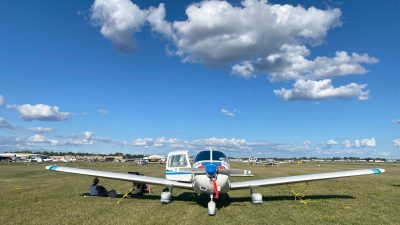Crosswind landings are among the most challenging skills in the private pilot curriculum. To consistently execute proper crosswind landings, pilots must understand the forces acting on the aircraft and how to counteract them effectively.
Approach and Crabbing
When approaching the runway with a prevailing crosswind, pilots must first crab the aircraft into the wind to maintain a ground track aligned with the runway. However, the aircraft cannot land in this crabbed position, as it would place excessive stress on the landing gear and tires while making the aircraft difficult to control.
Crosswind Correction Technique
As the aircraft enters short final, the pilot must begin the crosswind correction process:
- Apply rudder: Align the aircraft’s longitudinal axis with the runway centerline.
- Use aileron: Bank the aircraft into the wind to correct for downwind drift.
- Adjust power: Apply additional power to compensate for the increased drag created by the aileron and rudder inputs.
Ground Effect and Touchdown
As the aircraft enters ground effect, the pilot must make further adjustments:
- Reduce rudder: Compensate for the reduced effective crosswind due to surface friction.
- Reduce power and flare: Execute a normal landing procedure.
- Touchdown sequence: The upwind wheel should touch down first, followed by the downwind wheel, and finally, the nose wheel should gently contact the runway.
Additional Considerations
Maximum Demonstrated Crosswind Component: Pilots should be aware of their aircraft’s maximum demonstrated crosswind component, which can be found in the Pilot’s Operating Handbook (POH). This figure represents the best efforts of the manufacturer’s test pilot during certification and may not be achievable by all pilots.
Flap Usage: In strong crosswind conditions, using less than full flaps can be beneficial. Full flaps increase drag and make the aircraft more susceptible to crosswind influences, requiring additional control inputs. Pilots should refer to their aircraft’s POH for guidance on reducing flap inputs in strong crosswind situations.
Conclusion
Mastering crosswind landings requires a thorough understanding of aerodynamics and precise control inputs. By properly correcting for crosswind conditions, private pilots can demonstrate their knowledge of the forces involved and safely land their aircraft in challenging conditions.



